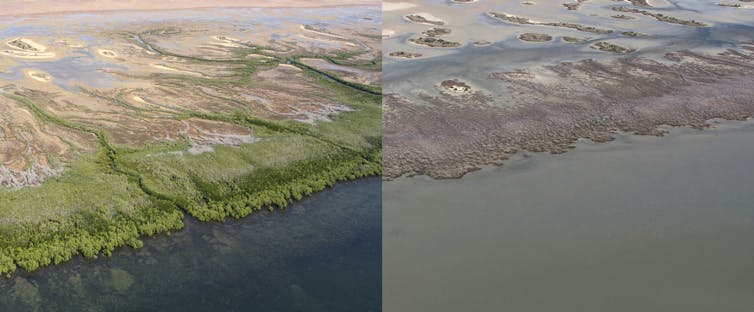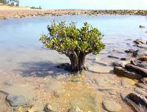Research just in reveals that extreme events from climate change (2011-2017) have damaged 45% of Australia’s coastal habitats, including coral reefs, mangroves, kelp forests and seagrass. These habitats provide food and shelter for a huge range of marine and estuarine species, including large fish, turtles and dugongs. Vital for fisheries, these key habitats are also used and much loved by local and international visitors.
The rate of their loss is extremely worrying, especially given that these changes have essentially occurred during an increase in global temperature of 1°C above the preindustrial era. As we go towards warming of 1.5oC, these serious impacts are more than likely to be amplified.

Much of the damage has been driven by unusually long and hot underwater heat waves. Other changes have been due to knock-on effects. For example, large amounts of kelp forests have disappeared from the south-east coast of Australia due to the spread of sea urchins and tropical grazing fish species as higher latitudes warm.
The future is of concern. The authors used ecosystem models to evaluate long-term outcomes from changing extreme events, which are predicted to become more frequent and intense with return times diminishing rapidly. In the latter case, this means that many ecosystems are failing to recover in time prior to the next extreme event.

Check out the peer-reviewed study here.

 Seagrass meadows have long been known to be highly productive habitats, and as a result producing oodles of oxygen in the midday sun. Anyone who’s ever snorkelled over a seagrass meadow on a sunny day will have seen seagrass leaves furiously bubbling away. This photosynthetic productivity can result in an increase in the pH of the water column (becoming less acidic). This is primarily because CO2 and, thus, its form when dissolved in seawater, carbonic acid, are withdrawn from the water as a substrate for photosynthesis. This results in the production of the bubbling O2. But what are the consequences of such a pH change?
Seagrass meadows have long been known to be highly productive habitats, and as a result producing oodles of oxygen in the midday sun. Anyone who’s ever snorkelled over a seagrass meadow on a sunny day will have seen seagrass leaves furiously bubbling away. This photosynthetic productivity can result in an increase in the pH of the water column (becoming less acidic). This is primarily because CO2 and, thus, its form when dissolved in seawater, carbonic acid, are withdrawn from the water as a substrate for photosynthesis. This results in the production of the bubbling O2. But what are the consequences of such a pH change?